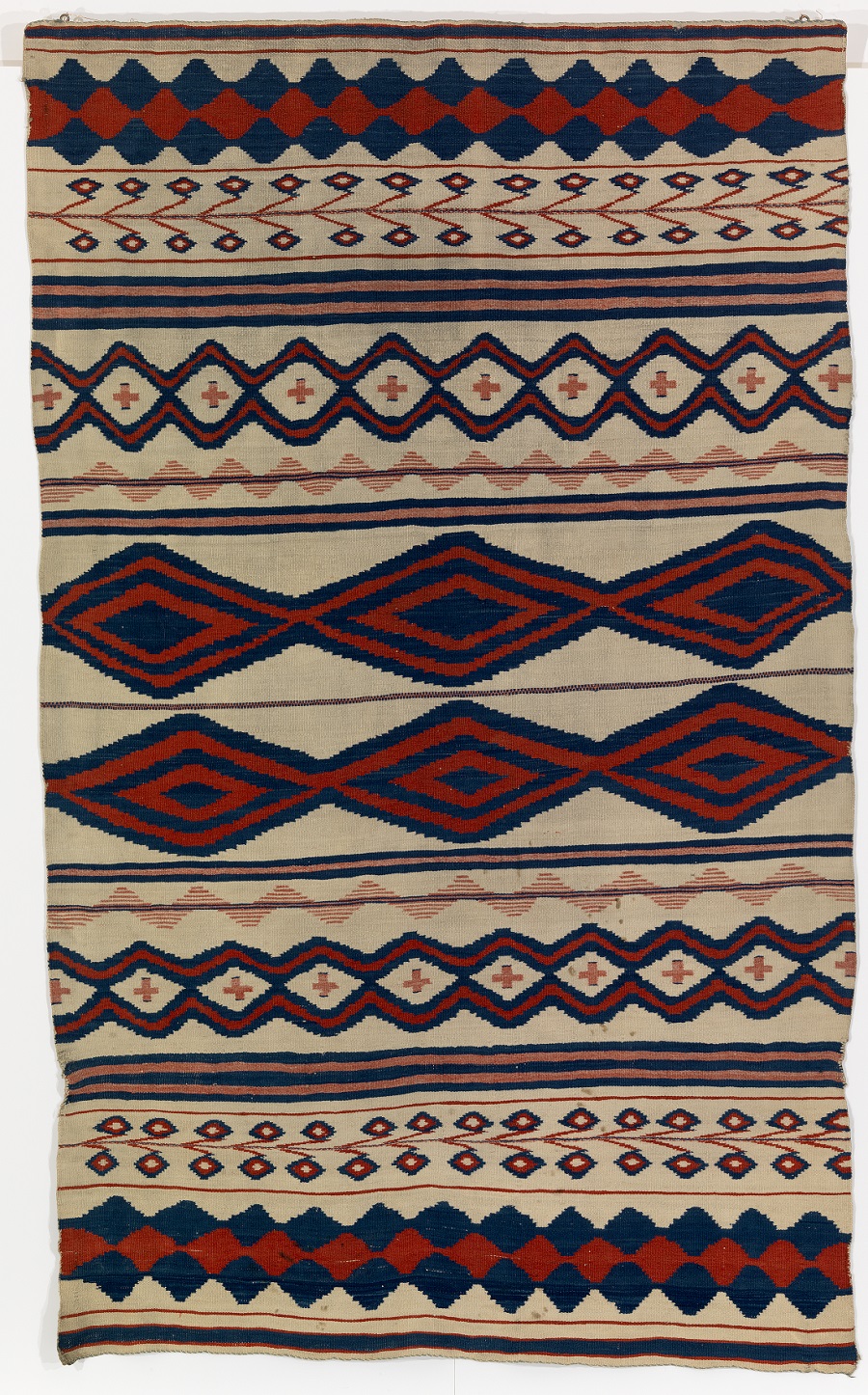Background
Navajo is the Western name for the Diné tribe that has for centuries inhabited a large area of land that stretches across modern day Arizona, New Mexico, Colorado, and Utah. Navajo women were renowned throughout the Southwest for their skill as weavers. Weaving techniques were passed down from mother to daughter, and no woman outside the tribe was allowed to learn the techniques.
From the 1820s through the 1840s, the Navajo were in a constant state of conflict with the Mexican settlers who were trying to gain control of their lands. Raiders captured and enslaved Navajo women. They forced the women to weave and sold their textiles for a profit. Some historians estimate that two-thirds of Navajo families lost someone to capture and enslavement during this period.
About the Document
This is a Navajo “slave” blanket, one of the textiles produced by Navajo women enslaved by Mexican settlers. This style of blanket represents the unique blending of cultures and traditions that occurred in the Southwest in the mid-1800s. The blankets were woven on traditional Navajo upright looms, but the materials and dyes were Mexican. The diamond and cross patterns are Mexican cultural symbols. But the blankets also include lazy lines, which are an homage to the mythical Spider Woman of Navajo traditions.
Vocabulary
- lazy line: The seam in a textile where two pieces are joined together. Navajo women emphasized the lazy line in their textiles in honor of the Spider Woman of Navajo traditions.
Discussion Questions
- Why were Navajo women revered in the American Southwest?
- What does this blanket reveal about the history of the American Southwest?
- Why is it important to learn about the history of Indigenous enslavement?
Suggested Activities
- Discuss this object in any lesson about the evolution of society in culture in the American Southwest.
- This blanket is a potent symbol of the forced cultural exchange that took place in the Southwest in the mid-1800s. After studying this object, ask the students to think about examples of cultural exchange (forced or voluntary) that are occurring in the U.S. today. What objects or works of art are being created as a result of those exchanges?
- For more on the art and work produced by Indigenous women, see:
- The movement of white American settlers westward had a devastating impact on the Indigenous communities that already inhabited those lands. To learn more, see:
Themes
AMERICAN CULTURE







